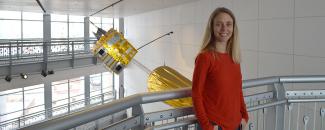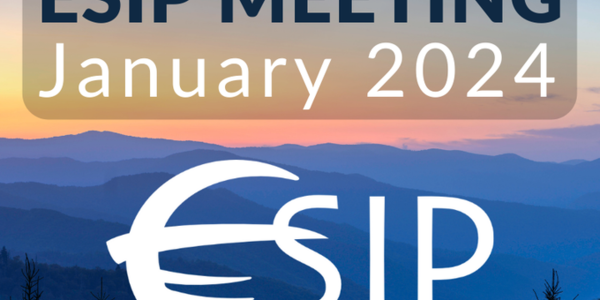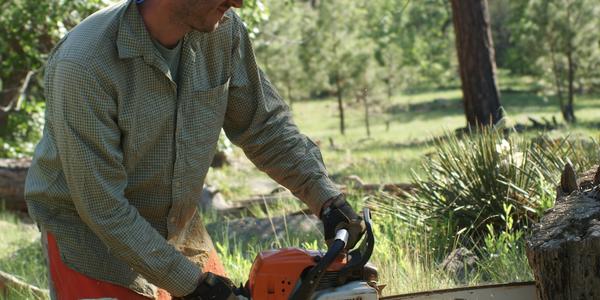
EDITOR'S NOTE: As of June 2019, Meg Tilton has departed for a new position outside of NOAA NCEI.
As a data manager for NCEI through the Cooperative Institute for Research in Environmental Sciences, Meg Tilton helps lead the charge of preserving space weather data for future generations.
What does a data manager do?
“Being a data manager is part project management and part programming,” said Meg. “My job involves lots of planning—estimating data volumes, submitting paperwork, coordinating with people on how we’re going to organize, archive, and disseminate data. But, I also do a fair amount of computer programming and scripting to automate tasks like ingesting and monitoring data.”
How did you end up working with NCEI?
In fact, it was her love of computer science that first sent Meg down her unique path to becoming a data manager. She earned her bachelor’s in computer science and began writing and testing accounting software in her first job. However, the tedious work of constant coding didn’t suit Meg very well, and she decided to move away from the field entirely.
So, she went on to earn a master of arts in fine arts and writing. After that, she took on several writing-related jobs. She even taught writing composition classes at the University of Colorado and was the dining critic for the Boulder, Colorado, paper, the Daily Camera, for a couple years.
Later on, Meg landed a tech-writing job for a company that manufactured atmospheric research instruments. “The science was fascinating—their instruments measured cloud particles, black carbon, and volcanic ash,” she said. “Aircraft companies would use their cloud-particle sensors during testing to make sure planes were flight-worthy even in bad storms. So, I got interested in how atmospheric science is used to protect people.”
During her tenure in that position, Meg also set up a customer database and programmed it to synchronize with the company’s accounting database. And that reminded her why she’d been so interested in computer science in the first place. “So, when my current data management job—combining science and programming—opened up, it seemed like a good fit. And, it has been,” Meg said.
What are you working on now?
Today, Meg primarily manages data from the Geostationary Operational Environmental Satellite, R-Series. The first satellite from this series lifted off on November 19, 2016, and is now known as the GOES-16 satellite. Managing data from the nation's most advanced weather satellite to-date is a massive and complex undertaking.
“We’re getting GOES-16 space weather data from several different sources,” Meg explained. “We’re getting the Level 0 unprocessed data that come from the spacecraft system through a temporary storage system that NASA built. We’re getting Level 1B data that have been processed into scientific units from both NOAA's Comprehensive Large Array-data Stewardship System (CLASS) and an internet-based protocol. And, we’re getting Level 2 data that have been processed into geophysical variables from the National Weather Service. So that’s four interfaces, and they’re wildly different.” It’s Meg’s job to make sure that all of these data are accurately collected, correctly documented, and securely archived.
While GOES-16 is her primary project these days, Meg also works with other space weather datasets like WSA-Enlil and data from the Deep Space Climate Observatory, or DSCOVR, satellite. All of these space weather datasets help provide advanced warning of geomagnetic storms that can disrupt communications, wreak havoc with geomagnetic systems, and pose dangers for satellite operations.
What do you like most about your job?
Amid all the data and technical intricacies of her work, Meg’s favorite aspect of her job is working with different groups of people to see a project come together. “I also really like scripting,” Meg continued. “It gives me a thrill every time I run code and it works.”
Meg also really appreciates the long-term nature of all the work NCEI does. “The data we’re archiving now will be looked at after we’re dead,” she said. “The time scale is so different than in the corporate world, where the focus is usually short term. There is a place for both approaches. But, in an age where we’re obsessed with ‘disruption’ and the latest tech fad, it’s refreshing to work someplace where continuity is valued.”
Who are you outside of your career?
Outside of her work with NCEI, Meg is the mother of two girls, who are seven and eight. While she’s found that keeping up with them takes up most of her free time, she still loves getting outside and being involved with her church. After 20 years of living in Boulder, Colorado, Meg considers herself a stereotypical “Boulderite,” from her outdoorsy nature to her love of the local cuisine.
Stay tuned for the next edition of Inside NCEI to learn more about our dedicated staff.



